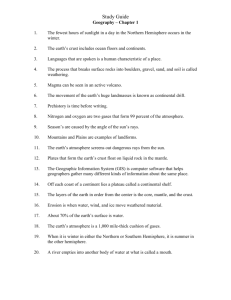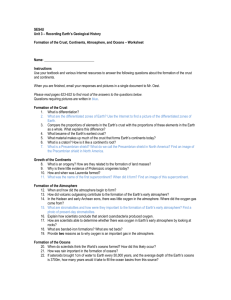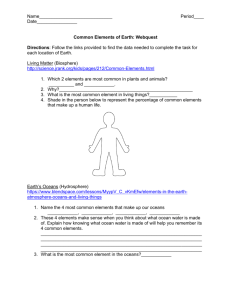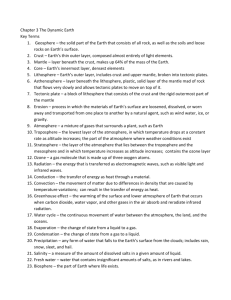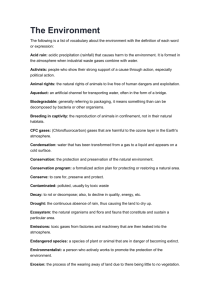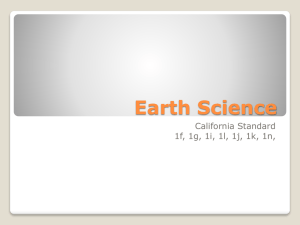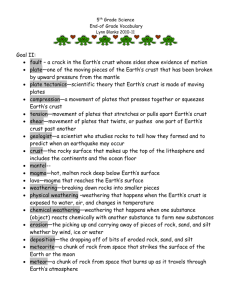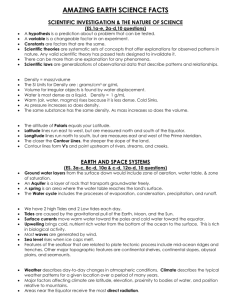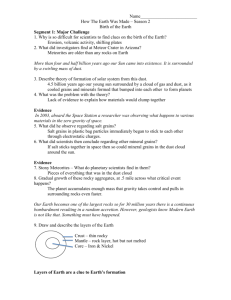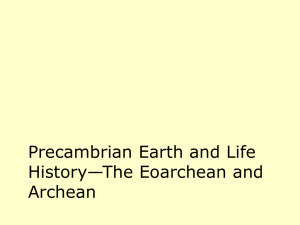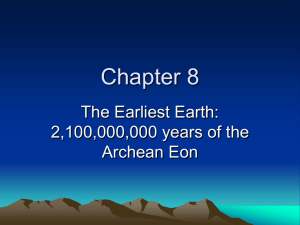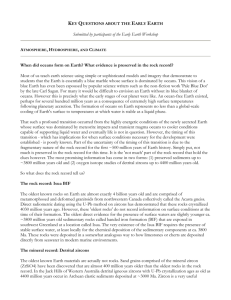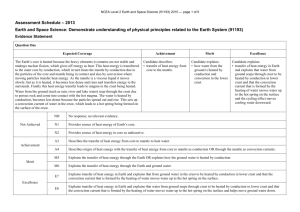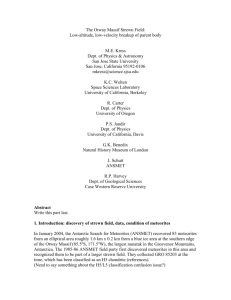The Precambrian Earth - Earth`s Beginnings (Mar.23)
advertisement
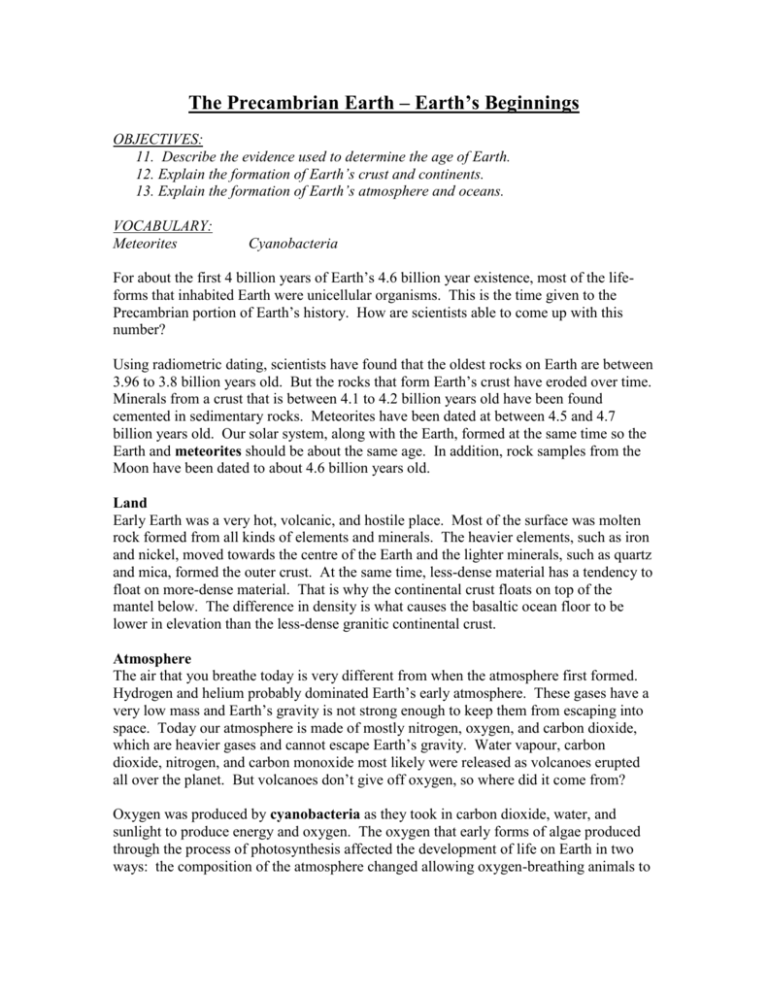
The Precambrian Earth – Earth’s Beginnings OBJECTIVES: 11. Describe the evidence used to determine the age of Earth. 12. Explain the formation of Earth’s crust and continents. 13. Explain the formation of Earth’s atmosphere and oceans. VOCABULARY: Meteorites Cyanobacteria For about the first 4 billion years of Earth’s 4.6 billion year existence, most of the lifeforms that inhabited Earth were unicellular organisms. This is the time given to the Precambrian portion of Earth’s history. How are scientists able to come up with this number? Using radiometric dating, scientists have found that the oldest rocks on Earth are between 3.96 to 3.8 billion years old. But the rocks that form Earth’s crust have eroded over time. Minerals from a crust that is between 4.1 to 4.2 billion years old have been found cemented in sedimentary rocks. Meteorites have been dated at between 4.5 and 4.7 billion years old. Our solar system, along with the Earth, formed at the same time so the Earth and meteorites should be about the same age. In addition, rock samples from the Moon have been dated to about 4.6 billion years old. Land Early Earth was a very hot, volcanic, and hostile place. Most of the surface was molten rock formed from all kinds of elements and minerals. The heavier elements, such as iron and nickel, moved towards the centre of the Earth and the lighter minerals, such as quartz and mica, formed the outer crust. At the same time, less-dense material has a tendency to float on more-dense material. That is why the continental crust floats on top of the mantel below. The difference in density is what causes the basaltic ocean floor to be lower in elevation than the less-dense granitic continental crust. Atmosphere The air that you breathe today is very different from when the atmosphere first formed. Hydrogen and helium probably dominated Earth’s early atmosphere. These gases have a very low mass and Earth’s gravity is not strong enough to keep them from escaping into space. Today our atmosphere is made of mostly nitrogen, oxygen, and carbon dioxide, which are heavier gases and cannot escape Earth’s gravity. Water vapour, carbon dioxide, nitrogen, and carbon monoxide most likely were released as volcanoes erupted all over the planet. But volcanoes don’t give off oxygen, so where did it come from? Oxygen was produced by cyanobacteria as they took in carbon dioxide, water, and sunlight to produce energy and oxygen. The oxygen that early forms of algae produced through the process of photosynthesis affected the development of life on Earth in two ways: the composition of the atmosphere changed allowing oxygen-breathing animals to evolved, and it produced the ozone layer which filters ultraviolet radiation coming from the sun. Oceans The water that formed the oceans also came from volcanic gases. As the early atmosphere and surface of the Earth cooled, the water vapour condensed to form liquid water, which rained back onto the Earth. Early water could have also come from the many comets that have struck Earth. All comets contain frozen water and gases and these could have been deposited in large amounts.
